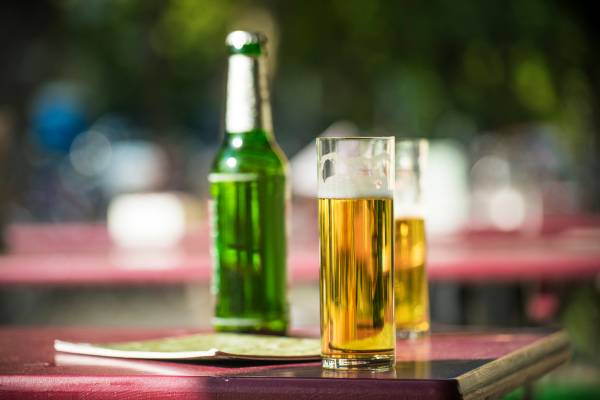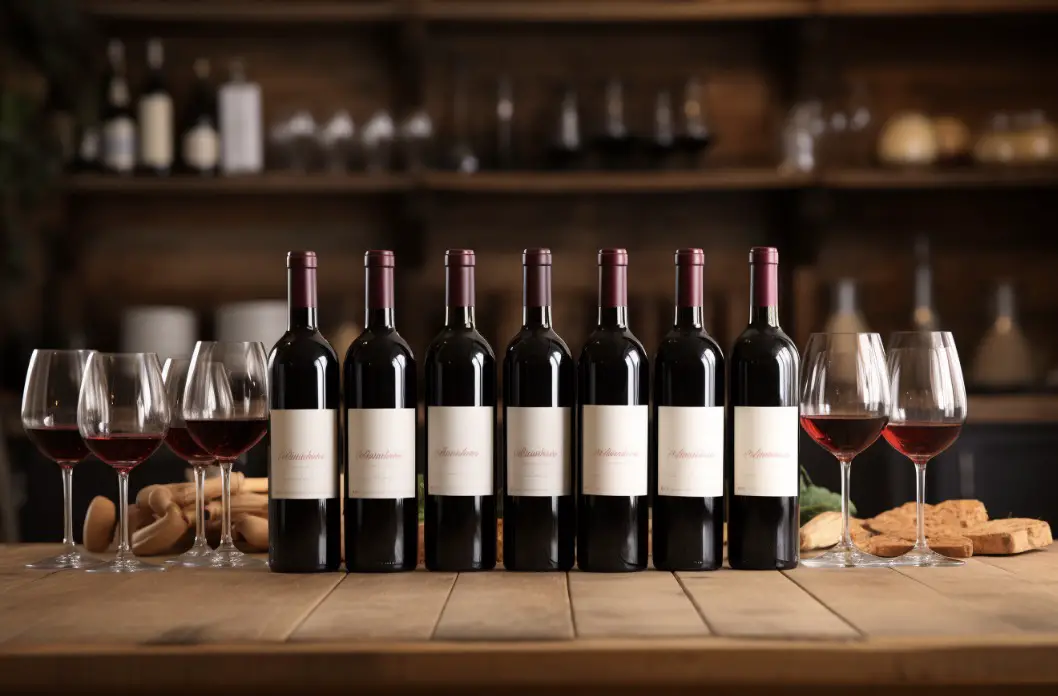Kölsch and Altbier are two distinctly different yet equally delicious German beer styles that share a common historical origin.
As a passionate beer enthusiast and expert brewer, I have had the pleasure of tasting both beer styles on countless occasions.
In this blog post, I will delve into the unique characteristics of each beer, highlighting their brewing process, appearance, aroma, and flavor profiles.
Join me as we journey through the world of German beers and explore the fascinating differences between Kölsch and Altbier.
Historical Origins
Both Kölsch and Altbier have their roots in the North Rhine-Westphalia region of Germany. Kölsch originated in the city of Cologne (Köln in German) in the early 20th century, while Altbier traces its history back to the city of Düsseldorf, with brewing traditions dating as far back as the 17th century.
Historical Origins of Kölsch and Altbier: A Tale of Two Traditional German Beers
Beer has been an integral part of German culture for centuries, and two styles that epitomize the rich brewing tradition of the country are Kölsch and Altbier. Both hailing from the western region of Germany, these beers have fascinating historical origins that shaped their distinct characteristics and popularity.
Let us delve into the captivating story behind the birth of Kölsch and Altbier, highlighting crucial events and the key differences that set them apart.
Kölsch: The Pride of Cologne
Kölsch, often referred to as the “liquid gold of Cologne,” finds its roots in the vibrant city of Cologne, located in the state of North Rhine-Westphalia. The history of Kölsch can be traced back to the early 17th century when brewers in Cologne started experimenting with top-fermented ales. However, it wasn’t until the 19th century that Kölsch began to take shape as a distinct beer style.

In 1603, the Cologne Brewers Guild enacted the “Reinheitsgebot,” a beer purity law similar to the one issued in Bavaria. This law stipulated that only barley, hops, and water should be used in the brewing process. This regulation laid the foundation for the development of Kölsch and its unique brewing methods.
One pivotal event in the history of Kölsch occurred in the 20th century during World War II. The city of Cologne was heavily bombed, resulting in significant destruction, including the devastation of many breweries. As a result, several brewers sought refuge in neighboring Düsseldorf and continued brewing their Kölsch-style beer. This event played a crucial role in spreading the popularity of Kölsch beyond Cologne’s borders.
Kölsch is a pale, straw-colored beer with a crisp and clean flavor profile. It is notable for its delicate maltiness, subtle fruitiness, and low bitterness. Traditionally, Kölsch is served in small, cylindrical glasses known as “Stange,” and its refreshing nature makes it a popular choice during the warm summer months.
Altbier: The Old-Style Beer of Düsseldorf
Altbier, meaning “old beer” in German, hails from the city of Düsseldorf, also located in North Rhine-Westphalia. Altbier’s origins can be traced back even further than Kölsch, with references to the style dating back to the 13th century. However, it wasn’t until the 19th century that Altbier emerged as a distinct and renowned beer style.
Düsseldorf’s brewing tradition faced a significant turning point in the early 19th century when technological advancements introduced the use of bottom-fermenting yeast strains. While many brewers embraced this new method, a group of traditionalists in Düsseldorf continued brewing with top-fermenting yeast, thus preserving the old-style brewing techniques that gave birth to Altbier.
One crucial event in the history of Altbier occurred in 1838 when the Schumacher brewery was established in Düsseldorf. This brewery became synonymous with Altbier, and its success spurred the popularity of the style throughout the region.
Altbier is a copper-hued beer with a balanced flavor profile. It showcases a combination of toasty malt sweetness, fruity esters from the top-fermenting yeast, and a firm hop bitterness. Unlike Kölsch, Altbier is traditionally served in small, rounded glasses known as “Schoppen,” which allow for better aroma concentration.
Differences and Similarities
While both Kölsch and Altbier share a common German heritage and represent the top-fermented ale tradition of the Rhineland, they do possess distinct differences that set them apart.

Firstly, Kölsch and Altbier differ in terms of their brewing methods. Kölsch follows a strict brewing process known as “top fermentation.” The beer is fermented at relatively warmer temperatures using ale yeast, resulting in a fruity and clean flavor profile.
On the other hand, Altbier is also brewed with ale yeast but undergoes a longer fermentation period at cooler temperatures, similar to lager beers. This extended fermentation gives Altbier a more subdued fruity character and a smooth, clean finish.
Another notable distinction lies in their appearances. Kölsch is pale and straw-colored, while Altbier boasts a richer, copper hue. The variation in malt used contributes to these color differences, with Kölsch typically featuring lighter malts and Altbier showcasing darker, roasted malts.
The serving tradition also sets these two beers apart. Kölsch is traditionally served in small, cylindrical glasses called “Stange,” which are continuously replenished by the waiter until the drinker signals to stop. This unique serving style encourages a social and convivial atmosphere in the beer gardens of Cologne. In contrast, Altbier is served in smaller, rounded glasses known as “Schoppen” or “Stüffje,” allowing drinkers to savor the flavors and aromas at a leisurely pace.
Despite their differences, both Kölsch and Altbier share some similarities.
They are both characterized by a balanced flavor profile, with malt sweetness complemented by a noticeable hop bitterness. Additionally, both styles prioritize craftsmanship and adhere to the Reinheitsgebot, the German purity law that mandates the use of only barley, hops, water, and yeast in brewing.
Today, Kölsch and Altbier continue to thrive as beloved beer styles in Germany and beyond. They serve as a testament to the rich brewing heritage of the Rhineland region and have gained international recognition for their unique characteristics and historical significance.
So, whether you find yourself in Cologne or Düsseldorf, don’t miss the opportunity to indulge in the crisp, refreshing allure of Kölsch or the malty complexity of Altbier. These beers offer not only a taste of history but also a glimpse into the cultural traditions that have shaped Germany’s brewing legacy.
Brewing Process
Kölsch and Altbier both fall under the category of top-fermented beers, meaning they are brewed using ale yeast strains that ferment at warmer temperatures. However, their brewing processes diverge from there.
Kölsch is brewed using a combination of Pilsner malt and sometimes a small amount of wheat malt, which contributes to its light, crisp character. It is then lightly hopped with German noble hops, such as Hallertau and Tettnang, resulting in a subtle, delicate hop profile. After primary fermentation, Kölsch undergoes a lagering period at cold temperatures, which contributes to its clean, smooth finish.
Altbier is brewed with a base of German Pilsner malt and a variety of specialty malts, including Munich, CaraMunich, and chocolate malt. These specialty malts give Altbier its distinctive amber color and complex malt character. Altbier is more assertively hopped than Kölsch, using German noble hops, and sometimes American hop varieties as well. The beer is fermented with a unique Altbier yeast strain, which lends a subtle fruity ester character.
Appearance
When it comes to appearance, Kölsch and Altbier have distinct differences. Kölsch is a pale, straw-colored beer with a clear, brilliant appearance and a creamy white head. In contrast, Altbier ranges in color from deep amber to a reddish-copper hue, with a slightly hazy appearance and a dense, off-white head.

Aroma
The aroma of a Kölsch is characterized by its delicate, grainy malt character, with subtle floral and spicy hop notes. You may also detect a faint fruity ester aroma, reminiscent of pears or apples.
Altbier, on the other hand, has a more robust aroma profile. The rich malt character comes through in the form of toasted bread, caramel, and nutty notes. The hop aroma is more assertive than in a Kölsch, with floral, spicy, and sometimes earthy or herbal qualities.
Flavor Profiles
The flavor of a Kölsch is clean, crisp, and slightly bready, with a subtle sweetness from the Pilsner malt. The hop bitterness is mild, just enough to balance the malt character. The finish is dry and refreshing, making Kölsch a highly drinkable beer.
Altbier offers a more complex flavor experience. The malt character is prominent, with flavors of toasted bread, caramel, and a touch of chocolate or roastiness. The hop bitterness is moderate to high, providing a firm backbone that balances the rich malt flavors. The finish is dry and crisp, with a lingering bitterness and subtle fruity esters.
Mouthfeel
Kölsch has a light body and high carbonation, which contributes to its refreshing, effervescent mouthfeel. Altbier, in contrast, has a medium body and moderate carbonation, providing a more substantial, yet still crisp and refreshing mouthfeel.
Food Pairings
Kölsch is a versatile beer when it comes to food pairings, as its light, crisp character complements a wide range of dishes. Some classic pairings include bratwurst, seafood, salads, and soft cheeses like Brie or Camembert.
Altbier’s rich malt character and assertive bitterness make it a great match for hearty, flavorful dishes. Traditional German dishes like sauerbraten, schnitzel, and pretzels with mustard are excellent choices, as well as grilled meats, roasted vegetables, and aged cheeses.
Conclusion
In conclusion, Kölsch and Altbier are both delightful representations of German brewing traditions, each with their own unique characteristics. Here are 5-10 key facts about these beers to remember:
1. Kölsch and Altbier both have their origins in the North Rhine-Westphalia region of Germany.
2. Both beer styles are top-fermented, but Kölsch undergoes a lagering period while Altbier does not.
3. Kölsch is brewed with Pilsner malt and has a light, crisp character, while Altbier uses a variety of specialty malts for a more complex malt profile.
4. Kölsch is pale and clear, while Altbier ranges from amber to reddish-copper in color.
5. The aroma of Kölsch is characterized by grainy malt and subtle hops, while Altbier has a more robust aroma with toasted malt and assertive hop notes.
6. Kölsch has a clean, slightly sweet flavor, while Altbier offers a rich, malty flavor balanced by moderate to high hop bitterness.
7. Both Kölsch and Altbier have a dry, crisp finish, but Altbier has a more lingering bitterness.
8. Kölsch is light-bodied and highly carbonated, while Altbier has a medium body and moderate carbonation.
9. Kölsch pairs well with light dishes like seafood and salads, while Altbier complements hearty, flavorful dishes like sauerbraten and grilled meats.
10. Both Kölsch and Altbier are excellent examples of traditional German brewing, showcasing the diverse range of flavors and characteristics that can be achieved within the world of beer.
FAQs
What is special about Kölsch?
Kölsch is a unique beer style originating from Cologne, Germany. It is special due to its distinct brewing process, taste, and appellation control. Kölsch is brewed using top-fermenting yeast, which imparts fruity and delicate flavors. It is then conditioned at cold temperatures, similar to lager beers, resulting in a clean, crisp, and refreshing taste with a subtle hop bitterness. Kölsch is protected by the Kölsch Konvention, which states that only breweries within a 50km radius of Cologne can use the term “Kölsch” for their beers, ensuring the authenticity and quality of this regional specialty.
Why is Kölsch served in small glasses?
Kölsch, a traditional German beer from Cologne, is served in small glasses called “Stangen,” which typically hold 200ml. This is because Kölsch is a top-fermented, light, and delicate beer with a crisp and refreshing taste. The small glasses help maintain the beer’s optimal temperature, aroma, and carbonation levels while being consumed. Additionally, the smaller servings encourage social interaction and frequent refills, as is customary in the beer halls and breweries of Cologne, ensuring that the beer is always fresh and enjoyed at its best quality.
What is Kölsch beer similar to?
Kölsch beer is similar to a German pale ale, specifically a hybrid between a pale lager and a traditional ale. It is characterized by its light, crisp, and refreshing taste with subtle fruity and hoppy notes, often compared to a Pilsner or Helles lager in terms of flavor profile.
What is the difference between Kölsch and ale?
Kölsch and ale are both types of beer, but they differ in several aspects such as origin, brewing process, and flavor profile. Kölsch is a regional specialty beer from Cologne, Germany, and is brewed using top-fermenting yeast, similar to ales. However, it undergoes a unique brewing process that involves cold conditioning or lagering, which is typically associated with bottom-fermented lager beers. This hybrid brewing process gives Kölsch a distinct light, crisp, and slightly fruity flavor with a subtle hop bitterness.
On the other hand, ale is a broader category of top-fermented beers that originate from various regions worldwide. Ales encompass a wide range of styles, flavors, and colors, including pale ales, stouts, and porters. Generally, ales have a more robust and complex flavor profile than Kölsch, with varying levels of maltiness, fruitiness, and hop bitterness depending on the specific style.
Is a Kölsch a lager or an ale?
A Kölsch is technically an ale, as it is brewed with top-fermenting ale yeast. However, it is often referred to as a hybrid beer because it undergoes a cold conditioning period, similar to lagers, which results in a clean, crisp taste that is characteristic of lagers.




